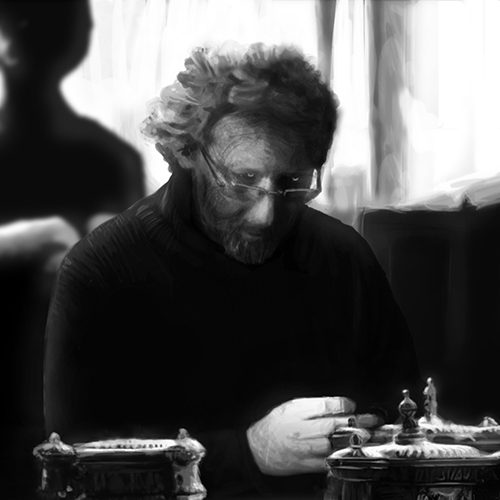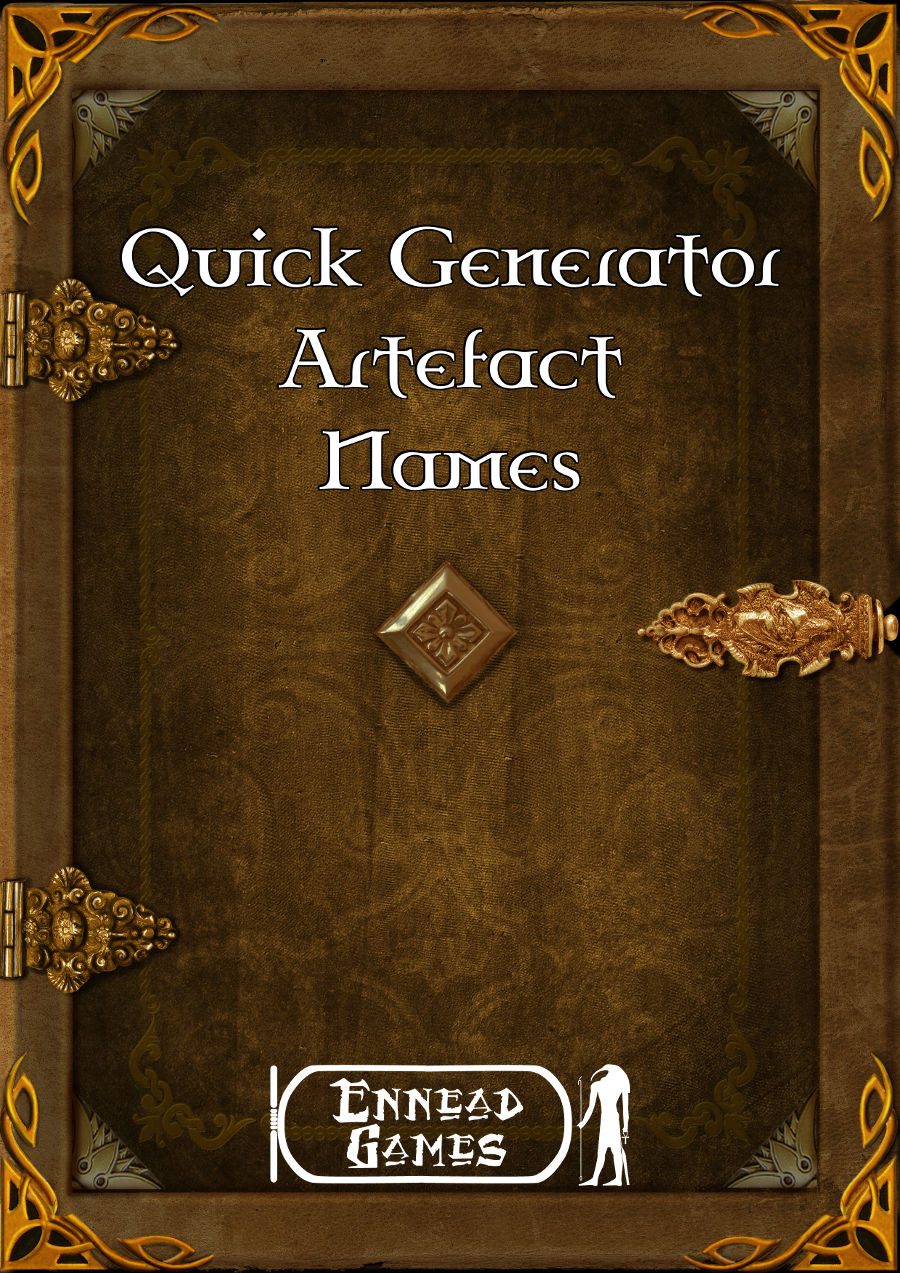
Film as RPG Research
Phil Nicholls blogs at Tales of a GM, where he writes about narrative gaming, faster prep and more story. He is currently running a HeroQuest Glorantha campaign in a home-brew setting. Phil has written for Johnn Four’s Roleplaying Tips newsletter and has a selection of self-published pdfs.
This essay is taken from the archives at Tales of a GM.
http://talesofagm.com/
Another of my pastimes is watching films. Like many of you, I have a growing DVD collection. Mine has a selection of Geek classics, along with some non-genre titles. As well as watching for pleasure, a good film is also research for both my writing and gaming. The parallel between film and fiction is quite clear. The benefits for a GM, however, may not be quite so obvious. In this essay I explore some of the ways films can help us be better GMs.
Blowing Up the Movies
First, however, a quick journey through two books by Robin D. Laws, the designer of my beloved HeroQuest. One of Robin’s latest works is Blowing Up the Movies, a guide to action films.
In this book, Robin takes a close look at some classic action films, and offers up wisdom for the GM. As to be expected from the context, Blowing Up the Movies focuses on films with thematic links to Feng Shui 2. Even if these films do not suit your game, Robin firmly establishes the principle that films can teach us how to be a better GM. I cannot hope to match Robin for his level of insight, so this book is the best place for a GM to begin learning gaming techniques from film-makers.
Hamlet’s Hit Points
As if one master class in film tropes was not enough, Robin D. Laws also wrote another superb book in this field. Hamlet’s Hit Points has a more academic tone than Blowing Up the Movies, but the core of the book is the detailed analysis of two films and a play by William Shakespeare. Can you guess which one?
The main focus of this book is the rhythm of narrative, and the way the plot is paced. Robin divides this rhythm into beats, and encourages Readers to apply the narrative analysis to a film or television episode of their choice. I have undertaken this exercise myself, and it is a great way to understand the presentation of narrative.
This book has a stronger link back to gaming, as the principles of narrative rhythm are applied within the rules of HeroQuest. Furthermore, the DramaSystem rules, at the heart of Hillfolk, grew directly from the theories outlined in Hamlet’s Hit Points.
Film Takeaways
For an extended exploration of films for the GM, I can do no better than recommend these two brilliant books. However, by standing on the shoulders of this giant, I can also offer up a few insights of my own. Thinking about my own viewing habits, there are four areas where films directly help and inspire a GM:
Narrative structure
Culture
Setting
Character
Narrative structure
Some of my favourite films show different ways to tell a story. These example plots may be tricky to implement at the table in the same way they appear in the film. However, they serve to illustrate how the conventional linear narrative is not the only way to tell a gripping story. I have two examples to share with you.
Firstly there is Hero (2002), starring Jet Li. This is my favourite film of all time, being beautifully made, with a stunning colour design and a clever plot. Essentially, it is several versions of the same story told with slightly different events. I cannot summarize the intricacies of the narrative in a short paragraph, you need to see this film for yourself. A simple takeaway would be how a revealing flashback can change the present, but this is selling short the beauty of Hero.
For all my problems summarizing Hero, it is far worse with my second choice: Memento (2000). Imagine a film cut into chunks of narrative, then play these chunks in reverse order. Intersperse with more flashbacks and unreliable narrators. As with, Sixth Sense or Fight Club, Memento is another film which requires a second viewing to understand exactly what you just watched. The premise seems impossible when I describe it, but the film pulls it off masterfully.
Culture
Another reason for a GM to watch a film is to learn how to replicate a culture at the table. If you are running a game set in feudal Japan, then watch samurai films to immerse yourself in the look and feel of a culture. Ideally, the film should have snippets of dialogue, characters and even whole scenes which the GM can reproduce at the table to convey these same cultural details to the Players.
My favourite film to achieve this is The 13th Warrior (1999). This is a version of the Beowulf story, but the plot deviates extensively from the original poem. However, the Viking culture presented in this film is ripe with elements to steal. The moving funeral oration is a standout moment for me, but much of the Norse culture presented here makes for great material to include in a game.
Setting
A film is a useful medium for GMs to study as the entire environment is deliberately created to evoke a specific mood within a scene. This feature is of more interest in genre films, where a GM can learn a lot about how to simulate a fantasy or SF environment. Clearly, we do not need quite such intense detail for our game. However, a believable film setting will have a lot of lessons for an attentive GM.
The clear leader in this field are the bonus DVDs for the Peter Jackson Lord of the Rings and Hobbit films. Yes, the films are great, but the level of detail in the superb extras takes the experience to another level. Along with teaching the viewer so much about the technical nature of creating a film, there is a lot of material here for the GM. Costume, weapons, armour, furniture and architecture are all meticulously designed to create a layered setting and reflect their culture of origin. There are hours of viewing on these discs, but they are worth the investment.
Character
The final element which a GM can lift from a film is a sense of character. A direct translation from screen to table may be disruptive to the game. Having every FBI agent appear as either Fox Mulder or Dana Scully will do nothing for your serious investigation game. However, the Players have no way of telling who the GM has in mind when roleplaying a character.
A good example of this for me is the Star Wars franchise. I confess, most of the villains in my game are portrayed with either an old, contorted voice, like the Emperor, or with a deep voice, in the style of Darth Vader. On reflection, I suspect most of my rogues bear a passing resemblance to Han Solo, too. Acting out my GMCs is probably the weakest part of my GM toolkit, but the Star Wars films have done their best to give me some clear role models to emulate.
Films at the Table
Hammy acting aside, the GM’s film research tends to have a subtle presence at the table. Films provide inspiration for narrative structure, cultural details, broad setting creation or individual characters. Unless you are playing a game set in a movie franchise, it is probably best to mix-and-match the details to avoid the Players spotting the source of your flamboyant rogue with a blaster and a waistcoat.
Conclusion
I watch films to relax, but my GM brain is always on. They can be a great source of telling detail to repackage, and present to your Players. If films work as a source of gaming inspiration for Robin D Laws, then they are good enough for me.
Which films should every GM watch? Have you ever stolen a large part of a film to play out at the table? How did your Players react? Share your thoughts with your fellow GMs in the comments below.
Happy Gaming
Phil
For more essays from Phil, and updates about his latest campaign, visit Tales of a GM.
http://talesofagm.com/




2 thoughts on “[Tales of a GM] – Film as RPG Research”
Comments are closed.